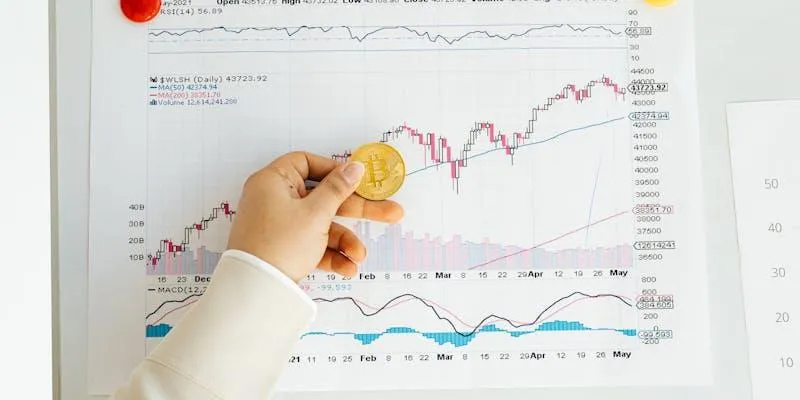Muni-Treasury Ratio Explained: Importance for Investors
The rate differential between municipal bonds and U.S. Treasurys is calculated using the Muni-Treasury ratio formula. This tool is useful, but it is merely a rough guide for determining which is a better buy at a particular moment.
Moreover, it serves as a gauge of munis’ historical performance versus treasuries. Municipal bonds were deemed more valuable than Treasurys, as seen by the muni-treasury ratio of 82.4% during the one year ending on May 28, 2021, to May 31, 2022. Let’s delve deeper to understand the concept of the M/T ratio.
Average Person Investing Implications
A number of indicators, including the muni-treasury ratio , can be used to assess the pricing of municipal bonds. Also, taking a broad view is crucial since other factors might affect the current muni to treasury ratio.
In the years that followed, the muni to treasury ratio ran well above normal due to the Federal Reserve’s (the Fed) vigorous efforts to spur economic recovery after the financial crisis of 2007-2008.
Two of these efforts were low interest rates and quantitative easing. Even though the current muni to treasury ratio has varied significantly since the virus outbreak in 2020, municipal bonds have typically benefited from it.
Given the current state of the economy and the several communities trying to recover, investors wary about municipal collapse are drawn to the high return on munis.
Historical Trades Of Municipal Bonds

Across a significant portion of the last three decades, the M/T Ratio has consistently been around 80% to 90% across the Intermediate yield curve, with somewhat higher values on the longer end of the spectrum. Historically, current muni to treasury ratios would often trade consistently above average.
During certain periods, politicians proposed reducing or eliminating the tax- exempt status of municipal bond revenue. The muni to treasury ratio often traded above 100% during those years.
Although the AAA municipal bond yield was tax-free and the Treasury bond yield was subject to federal taxes, the municipal bond yield was higher in the same period. Municipal forecasters often remarked, “Free muni exemption!”
But this scenario has changed in early 2024. Although overall interest rates have increased in recent years, making municipal bond yields more appealing, the muni-treasury ratio has been continuously falling.
This is primarily due to limited supply, stable demand, and the possibility of increased tax rates, leading to a change in municipal ownership toward less ratio-sensitive buyers. The muni to treasury ratios reached new lows in late 2023 and early 2024.
Calculating The Muni-Treasury Ratio
Understanding the ratio math is straightforward. Divide the yield on U.S. Treasury bonds with the same maturity by the yield on AAA-rated municipal bonds (munis). The formula is given below:
M/T Ratio = X-Year AAA Muni Yield / X-Year Treasury Yield
Compare bonds with “X” maturity years. For instance, if AAA munis yield 1.5% and Treasury yields 2.0%, the ratio is 0.75. As M/T ratios rise, municipalities become more enticing. Given that the muni-treasury ratio has averaged 80%-90%, higher ratios indicate good municipal performance.
Credit Risk Levels Of Municipal Bonds
Although low-risk, municipal bond purchases in relation to muni to treasury ratios are not risk-free. If the issuer can’t meet its obligations, it may miss interest payments or be unable to repay the principal at maturity. Rating organizations like Moody’s Investors Service and Standard & Poor’s determine an issuer’s creditworthiness by its ability to meet debt commitments.
They rate issuers from ‘Aaa’ or ‘AAA’ for the finest creditworthiness to ‘Ca,’ ‘C,’ ‘D,’ ‘DD,’ or ‘D’ for defaulters. Bonds with “BBB,” “Baa,” or higher grades are good investments for capital preservation. To reassure investors, many municipal bonds include insurance coverage that covers default.
Investor Services releases its proprietary research, “U.S. Municipal Bond Defaults and Recoveries,” which includes over 10,000 municipal bond issuers annually. The latest research also includes defaults from 1970 to 2020.
Comparing investment-grade municipal bonds during the last ten years to similarly rated corporate bonds, the average default rate was 0.10% as opposed to 2.25%. Municipal bond failures are common, and almost seven of 2017’s ten defaults were tied to the Puerto Rican financial crisis. That year saw a record $31.15 billion in bond defaults, up 15% from the year before.
What M/T Ratio Means For Individual Investors

There are several options for evaluating the worth of municipal bonds, including the current muni to treasury ratio. Always keep the whole picture in mind, as several factors might impact the ratio.
The aggressive policies of the Federal Reserve, intended to spur economic recovery, resulted in an M/T ratio that ran substantially above normal in the years after the financial crisis of 2007-2008. Two of these policies were quantitative easing and very low interest rates.
The muni-treasury ratio has fluctuated somewhat since 2020, although it has generally favored municipal bonds. Amidst the economic crisis and recovery efforts faced by several cities, investors are drawn to munis due to their high yield.
It’s important to remember that even when the current muni to treasury ratio is large, municipal bonds may return negatively. Reductions in munis prices often coincide with declines in Treasury prices. In this case, there is an inverse relationship between bond prices and yields.
A solid rule of thumb for investing is to pick your assets based more on your circumstances and aspirations than on the state of the market. Keep these things in mind while making your investment decisions.
What To Consider Next
Municipal bonds in muni-treasury ratio may appeal to high-earners due to their credit quality and tax benefits. Duration extension and locking in advantageous longer-term rates are recommended for investors who have held their assets too short. We also think adding some lower-rated investment-grade munis makes sense, as investors are well rewarded for little credit risk. Moreover, your local Schwab consultant can help you choose investments.











